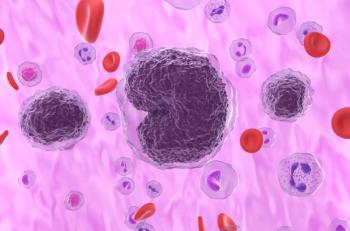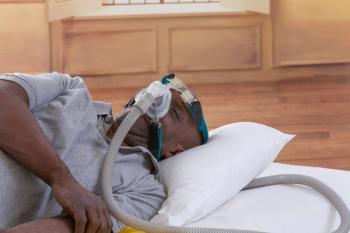
Medicare Steps In to Make Transitions of Care Safer
If you have a primary care relationship, there is at least one health care provider who does know you: your primary care physician (PCP). Yet in the turmoil of admission and the danger of discharge, it has often been likely that the only physician on earth who knows you and your health would never know that you spent 3 days in the hospital. That is, until you recovered and told the person.
It can be one of the scariest moments in your life. When you end up at the emergency department (ED) or you’ve been admitted to the hospital, your health has deteriorated and you’re likely to find yourself in the full time care of health care providers you’ve never met before.
If you have a primary care relationship, there is at least one health care provider who does know you: your primary care physician (PCP). Yet in the turmoil of admission and the danger of discharge, it has often been likely that the only physician on earth who knows you and your health would never know that you spent 3 days in the hospital. That is, until you recovered and told the person.
Technology is changing this. Today, Aledade partner physicians receive admission, transfer and discharge (ADT) notices for 50% of their patients’ admissions. It hasn’t been easy. Getting to 50% has required Aledade team members across the country pounding on desks to get access, a few engineers finding new and innovative ways to make the connections work well and our partner practices changing their workflows to use the information to make a difference in people’s lives. We have known that it will
On March 9, (CMS) took a
ADT notification is the easiest form of health information exchange. Every day, thousands of notifications flow across this country, yet thousands more should be flowing. Making that flow a condition of participation took careful consideration on CMS’s part. CMS finalized several compromises:
- Limit the required information to only the most essential information: who is the patient who is treating the patient what facility is he or she in
- Only hospitals with systems capable of sending such notices are required to do so
- Any means of electronic transmission of the notice is acceptable
- Focus on just primary and post-acute care.
None of this, of course, limits a hospital from doing more. Aledade works with many hospitals and health information exchanges that accomplish far more than these minimum requirements.
Here’s precisely what the rule requires. Starting 6 months from now, hospitals (including psychiatric hospitals and CAHs) must send electronic patient event notifications of a patient’s admission to inpatient or emergency department, transfer between ED, inpatient and observation status, and discharge from ED, inpatient or observation status to:
- Post-acute service providers who have a prior to admission relationship with the patient and/or post-acute service providers to whom the hospital is discharging the patient
- The patient’s established primary care providers (physicians, nurse practitioners, physician assistants)
- The patient’s established PCP
- Other providers or groups identified by the patient
These notifications are required at the time of admission and immediately prior to, or at the time of, a patient’s discharge. At Aledade, we have gone so far as to set up real time text alerts for some of our practices.
Hospitals can use any technology that gets the job done. While HL7 2.5.1 is common, hospitals could use C-CDA or a FHIR-based API. CMS’s mantra here is “if it works, use it.” Hospitals can also use multiple modes of transmission. For example, if some physicians are using the same electronic health record (EHR) as the hospital, the transmission might never leave the EHR. On the other hand, for physicians using different EHRs, a hospital may use the HL7 2.5.1 transmissions. Hospitals can also use an intermediary such as a health information exchange. They can do so either exclusively, in combination with other intermediaries, or direct from the hospital notices. The only limitation is that intermediary cannot be used to limit the notifications to a specified set of recipients.
Turning to the CoP, there are 2 important qualifiers to understand. The first is about established PCPs and post-acute providers. To quote the rule:
We expect that hospitals would demonstrate this capability in a variety of ways, for instance, by demonstrating that the hospital has processes and policies in place to identify patients’ primary care practitioners and incorporate this information into the patient event notification system, or through recording information received from patients about their providers.
Aledade takes care of this requirement by providing hospitals a list of patients for whom our partner practices have such established relationships.
Second, the hospital must make a reasonable effort to ensure that the notifications are received. To again quote the rule:
We believe that this modified standard will provide hospitals and CAHs with appropriate flexibility and can account for the constraints of providers’ existing systems. We also believe that this modified standard takes into account the fact that some recipients may not be able to receive patient event notifications, or may not be able to receive notifications in a manner consistent with a hospital system’s capabilities, and the fact that hospitals and CAHs may not be able to identify provider recipients for some patients. We expect that surveyors will evaluate whether a hospital is making a reasonable effort to send patient event notifications while working within the constraints of its existing technology infrastructure.
Today, Aledade provides many different types of connections to hospitals and conforms to different patient matching strategies to maximize our ADT coverage.
We are thrilled for our practices and for Medicare beneficiaries that this rule has gone into effect. We look forward to the day when not 50% of people are safeguarded, but all people are. And when the admission into the hospital, or the discharge out of one, doesn’t have to be quite as scary.
Newsletter
Stay ahead of policy, cost, and value—subscribe to AJMC for expert insights at the intersection of clinical care and health economics.













































